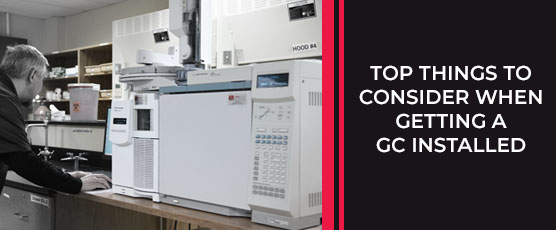GenTech Scientific, a leading provider of scientific equipment and services, recently went to Erie Community College in Williamsville, NY, to conduct the installation of a GC/MS system (Agilent 6890N with 5975 MSD and 7683 Autosampler). With their expertise in analytical instrumentation, GenTech’s team of skilled technicians meticulously executed the installation process. Notably, one of the technicians was new to the team, providing a unique perspective and offering valuable feedback as he gained hands-on experience on-site.
When it comes to installing a gas chromatography (GC) system, there are several crucial factors to keep in mind. The successful installation of a GC system is essential for accurate and reliable analysis in laboratories and industries. Here are the key considerations to prioritize during the installation process:
Site Preparation: Before installing the GC system, ensure that the designated site meets the necessary requirements. Consider factors such as ventilation, power supply, and stability of the surface. Adequate space should be available to accommodate the GC system, including any associated accessories or peripherals.
System Compatibility: Verify the compatibility of the GC system with other equipment or instruments in your laboratory setup. Ensure that the necessary connections and interfaces are available to integrate the GC system seamlessly. Compatibility issues can lead to complications and hinder the overall functionality of the system.
Installation Expertise: GC systems are complex and require specialized knowledge for proper installation. It is advisable to rely on experienced professionals or technicians who have expertise in installing GC systems. Their knowledge ensures that the system is installed correctly, minimizing the risk of errors or malfunctions. Since GenTech service engineers refurbished your recently purchased instrument, they already know it well and will have it online in very little time. A GenTech installation also protects your warranty – if we install the instrument, we know that it was done correctly and that any problems are not due to faulty installation.
Safety Precautions: GC systems involve working with potentially hazardous substances. Prioritize safety during the installation process by following appropriate safety protocols and guidelines. Ensure that safety features, such as gas leak detectors and emergency shut-off valves, are installed and functioning properly.
Calibration and Validation: Proper calibration and validation of the GC system are crucial to ensure accurate and reliable results. Follow the manufacturer’s guidelines for calibration procedures and carry out validation tests to verify the system’s performance. This step helps identify any potential issues and ensures the system is ready for analysis.
Training and Familiarization: Once the GC system is installed, provide training to the laboratory personnel who will be operating the equipment. Familiarize them with the system’s software, controls, and maintenance procedures. Adequate training improves efficiency, minimizes errors, and maximizes the benefits of the GC system. When you purchase an installation from GenTech, a service engineer will provide training to familiarize your researchers with the instrument and its operations.
System Validation and Performance Verification: After installation, perform system validation to confirm that the GC system meets the desired performance specifications. Verify the system’s accuracy, precision, and linearity through appropriate tests and standards. Regular performance verification ensures the reliability of the GC system over time. This is also part of the GenTech installation process.
By considering these key factors during the installation of a GC system, you can ensure a smooth and successful integration into your laboratory or industrial environment. A well-planned and properly executed installation lays the foundation for accurate chemical analysis, enhances productivity, and contributes to the overall success of your analytical processes.






